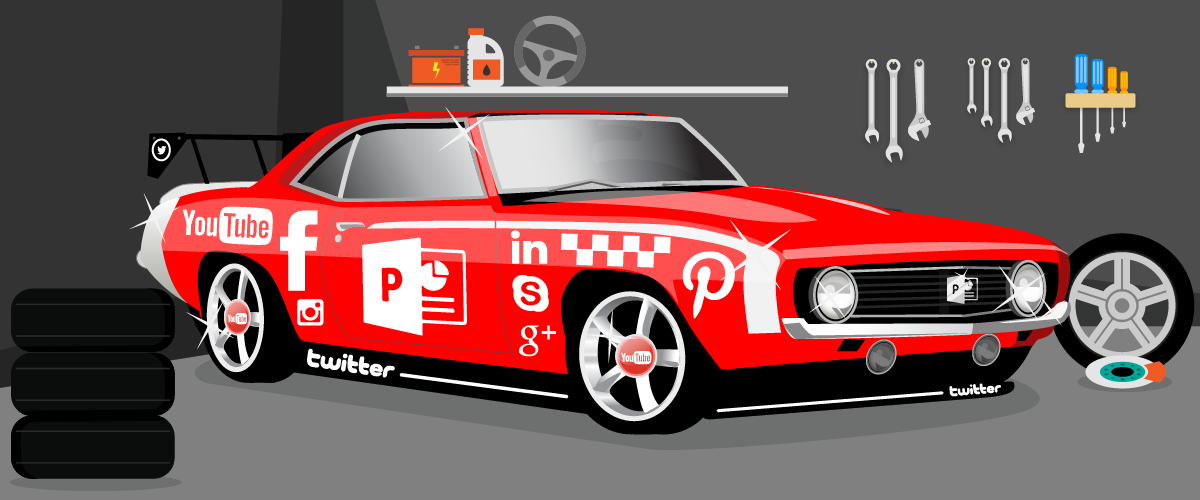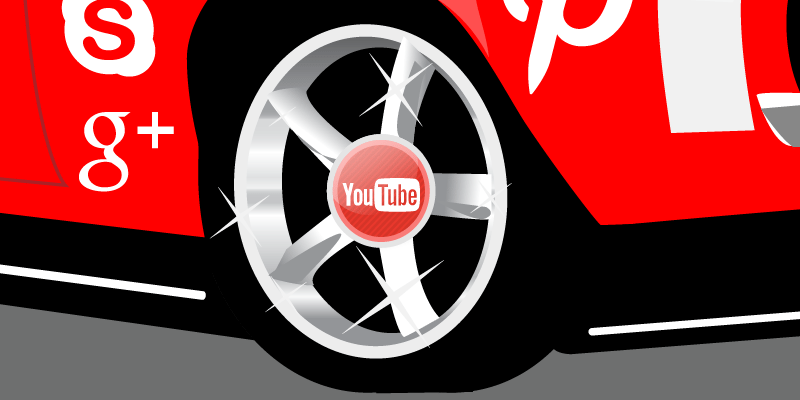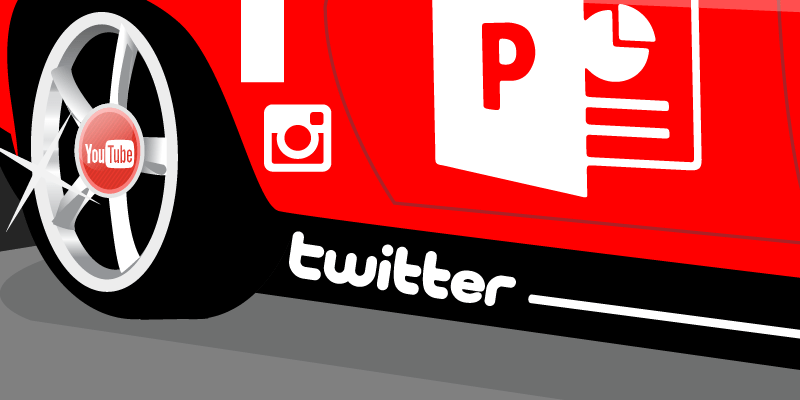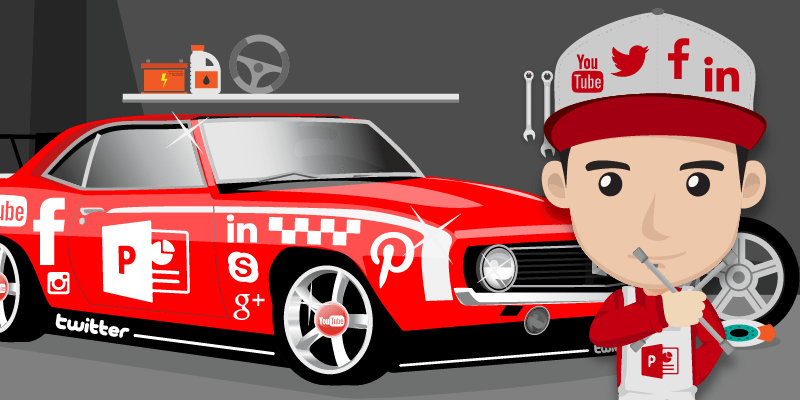
Are you more of a fan of visually presented information? Just scroll down all the way to the bottom for an infographic version of this post!
Contrary to popular misconceptions, corporate pitches aren’t just cold, blank, and straightforward. When it comes to presentations, content and design should work together to supplement your pitch.
Whether you’re talking to a customer or an investor, all parts of your deck should aid you in engaging and grabbing the audience’s interest. To do that, you need relevant visuals that add to your ideas. This may mean images and animation, but it can also come in the form of live Web pages. Not only can embedded content give proof of your company’s achievements, but they also encourage clients to contact you.
Embedding Web Content into Your Business Presentations
For users familiar with the 2010 version of Microsoft Office, LiveWeb is a useful add-on for embedding Web content on your slides. It can also enhance your credibility in a pitch by providing a concrete look of your offerings. This gives you an opportunity to leverage them for your business.
The direct LiveWeb feature has been discontinued in recent versions of PowerPoint, but you can download a third party add-in to bring it back. There are also other add-ins which are available for PowerPoint 2013 onward that have the same functions as LiveWeb. One of these is PowerPoint’s Office Mix, which allows users to insert Web pages, apps, and even interactive quizzes into their slides.
Let’s take a look at which Web sites are ideal for embedding and how the content you use from them can contribute to your pitch:
1. YouTube
Compared to other learning styles, visual learning is the most common among a large group of people. Engage your audience visually to keep them hooked onto your pitch. Broadening the range of media you offer further supports and visualizes your main points, making it easier for viewers to digest.
For instance, videos can transform the way customers perceive your product. In an article on the effect of videos on its viewers, Invodo’s Claire Queally shows that buyers who view company videos are two to three times more likely to purchase something from the brand.
Take this marketing strategy from the Web to your own presentation by embedding YouTube videos into selected slides. Whether they’re product demos or AVPs about your company, this gives you an opportunity to both inform and impress them. Just make sure that your videos are relevant to your pitch and people’s current interests. At the very least, they should reflect the benefits your clients will be gaining from your products, as well as your advantages over the competition.
If you’re planning to deviate from the usual company video and simply insert a supplementary clip to entertain viewers, don’t stray too far from your core message. For example, a recorded speech from a keynote speaker related to your topic is acceptable, but a random cat video might miss your target audience and your point entirely, especially in a formal business setup.
2. Twitter
In the age of social media, influencers are more accessible than before. Most of these prominent figures are found on the net, where their followers can easily see them. However, keynote speaker Jay Baer differentiates influencers, who simply raise brand awareness, and brand advocates, who actually convince others to invest in you. These online reviews on brands can impact people’s perception of you, especially for millennials who are often tuned into digital media.
To gain a wider audience and increase the probability of lead conversion, show your tech-savvy prospects what others think about your brand. Display a live Twitter feed on your deck to access customer opinions in real-time. Doing this gives your clients the latest updates about your company. Convincing people to invest in you will be easier if you can show positive impressions from past clients and customers. At the same time, you won’t be able to show a Twitter feed without enough mentions.
Encourage customers who support your product to use hashtags and other social mentions on Twitter. Ride on the wave of trending topics and launch a marketing campaign or site content that users are currently into. The more positive feedback your brand receives, the better its image becomes in the market.
3. Facebook
This social media giant offers one of the best chances for generating leads with casual interactions. Like Twitter, Facebook is a place where users and influencers can interact and trade recommendations of their preferred brands. Boost your image even further by tapping into this established social media platform.
If you plan to show how popular or active you are with your online market, Facebook is your best bet. Being the most widely used social network, it contributes greatly to showing consumer opinions about your brand. Highlight your marketing efforts through Facebook’s built-in analytics tracker, which shows the number of likes, mentions, and even followers of your page. Outside your presentation, you can use the tracker to keep track of how many leads have interacted with your page.
As an embedded live page on your deck, showcase how actively you engage your consumer base. It will encourage past customers to repeat interaction with your page and inspire leads to start a transaction with you. Making use of Facebook analytics can establish your market dominance when you pitch to other clients because it’s an impressive aid for those who might want to see the statistics behind your claims.
4. LinkedIn
In a study conducted by public relations firm Weber Shandwick, the future of large corporations seems to be geared towards going digital. As we’ve already reiterated in the previous points, social media is a fast growing arena for customer and business interaction. It’s no wonder CEOs are turning to it for increased exposure.
Among all social media sites, LinkedIn remains the most popular for networking with other companies. In fact, it’s used by nearly 28% of CEOs from Fortune 500 companies in 2014 alone. If Twitter and Facebook can show proof of how effective you are with customers, LinkedIn operates within your circle and instead displays how well-connected your network is. Your business partnerships, as well as the people you’ve worked with, are essential in communicating how well you can swim with the big fish.
At the very least, an effective LinkedIn profile should contain relevant samples of your portfolio. It should also feature important connections with people and companies related to your line of work. All these can prove decisive in showing your effectiveness as a business partner. In addition to expanding your customer relations, make sure you take note of your company’s relationship with other businesses, too, because being associated with other trusted brands also improves your image.
As the old adage says: “Birds of the same feather flock together.”
5. Company Web Site
Some presenters will settle with screen caps of their company site, if they include it at all in their business presentation. Since most don’t, details about their Web site often simply remain as a tiny contact detail in their slides. However, that can easily be missed. Less meticulous audience members might not pay attention to the fine print and only retain the highlights of your pitch.
Let your prospects form their initial impression of your company site during your presentation itself by including it as one of the Web pages on your slides. Embedding your site as a live Web page shows your audience how to navigate around it, so walk your viewers through your page in real time by including it in your presentation. In case the previous platforms in the points above don’t work out well for you, you can always show the same statistics, testimonials, and even videos available on your site.
Aside from social media profiles, being active on your own site is important information for prospects. Other client interactions will come from your company’s page, so letting people know how consistent your online presence shows how dedicated you are as a business partner. As mPower Consulting founder Brian Hamlett states in his article, building up your site once isn’t enough to keep people interested. Show them that there’s something to look forward to every time they visit your page to ensure closing and repeating a transaction.
One Last Thing: Facts Establish Reputation
Credibility is crucial to presentations. Investors need to put their money into someone they can trust in order to grow their business. To establish this, improve your deck with various kinds of Web content. As with socialization, networking is now going digital, so catch up with the times to avoid being left behind.
With a large number of the population leaning towards visual, make your slides more interesting with images, but don’t stop there. Embed YouTube videos to inform them about how your company does business or how your products can help your clients.
Enumerating your advantages over the competition and showing these at work are great ways to sell yourself. You can also prove how popular you can be with customers and businesses through positive testimonials from social media platforms like Twitter and Facebook. According to creativity mentor Luke Sullivan’s book, Hey Whipple, Squeeze This, these types of feedback serve as solid proof of your achievements. They can go a long way to convince both customers and partners that you’re the company they want to invest in.
Work your online presence into your deck for more convincing business presentations!
Check out and share this infographic!
https://www.slideshare.net/SlideGenius/5-types-of-web-content-to-boost-your-presentations
References:
Sullivan, Luke. Hey, Whipple, Squeeze This a Guide to Creating Great Ads. 3rd ed. Hoboken, N.J.: John Wiley & Sons, 2008.
Baer, Jay. “Social Media Influencers versus Brand Advocates Infographic.” Convince&Convert. www.convinceandconvert.com
Gross, Liz. “How to Add a Live Twitter Feed to Your PowerPoint Presentation.” Social Media Today. June 6, 2013. www.socialmediatoday.com
Hamlett, Brian. “The Importance of Consistently Updating Your Website.” MPower Consulting. www.mpoweringu.com
Knarr, Cat. “8 Secrets to Building a Stunning LinkedIn Profile.” The Huffington Post. February 3, 2014. www.huffingtonpost.com
Kushner, Daniel. “Best Practices for Successful Lead Generation Through Social Media.” Business 2 Community. June 29, 2015. www.business2community.com
Parsons, James. “How Do I Get Tracking on My Facebook Page?” Boostlikes. May 8, 2015. www.boostlikes.com
Queally, Claire “Top 5 Things to Know About eCommerce Video Viewers.” Invodo. November 17, 2015. Accessed August 27, 2015. www.invodo.com
“80% of CEOs from the World’s Top Companies Take to Social Media.” Weber and Shandwick. May 18, 2015. www.webershandwick.com
Office Mix. Accessed August 28, 2015. mix.office.com





